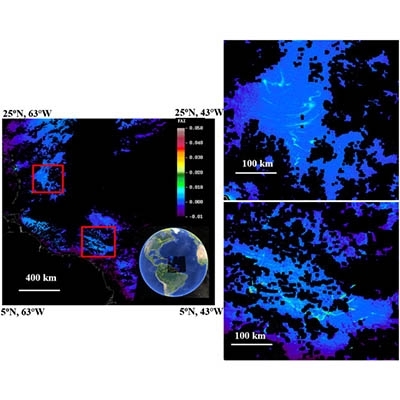
Spectral and spatial requirements of remote measurements of pelagic Sargassum macro algae
Remote detection of pelagic Sargassum is often hindered by its spectral similarity to other floating materials and by the inadequate spatial resolution. Using measurements from multi-spectral satellite sensors (Moderate Resolution Imaging Spectroradiometer or MODIS), Landsat, WorldView-2 (or WV-2) as well as hyperspectral sensors (Hyperspectral Imager for the Coastal Ocean or HICO, Airborne Visible-InfraRed Imaging Spectrometer or AVIRIS) and airborne digital photos, we analyze and compare their ability (in terms of spectral and spatial resolutions) to detect Sargassum and to differentiate it from other floating materials such as Trichodesmium, Syringodium, Ulva, garbage, and emulsified oil. Field measurements suggest that Sargassum has a distinctive reflectance curvature of ~ 630 nm due to its chlorophyll c pigments, which provides a unique spectral signature when combined with the reflectance ratio between brown (~ 650 nm) and green (~ 555 nm) wavelengths. For a 10-nm resolution sensor on the hyperspectral HyspIRI mission currently being planned by NASA, a stepwise rule to examine several indexes established from 6 bands (centered at 555, 605, 625, 645, 685, 755 nm) is shown to be effective to unambiguously differentiate Sargassum from all other floating materials Numerical simulations using spectral endmembers and noise in the satellite-derived reflectance suggest that spectral discrimination is degraded when a pixel is mixed between Sargassum and water. A minimum of 20–30% Sargassum coverage within a pixel is required to retain such ability, while the partial coverage can be as low as 1–2% when detecting floating materials without spectral discrimination. With its expected signal-to-noise ratios (SNRs ~ 200:1), the hyperspectral HyspIRI mission may provide a compromise between spatial resolution and spatial coverage to improve our capacity to detect, discriminate, and quantify Sargassum.


